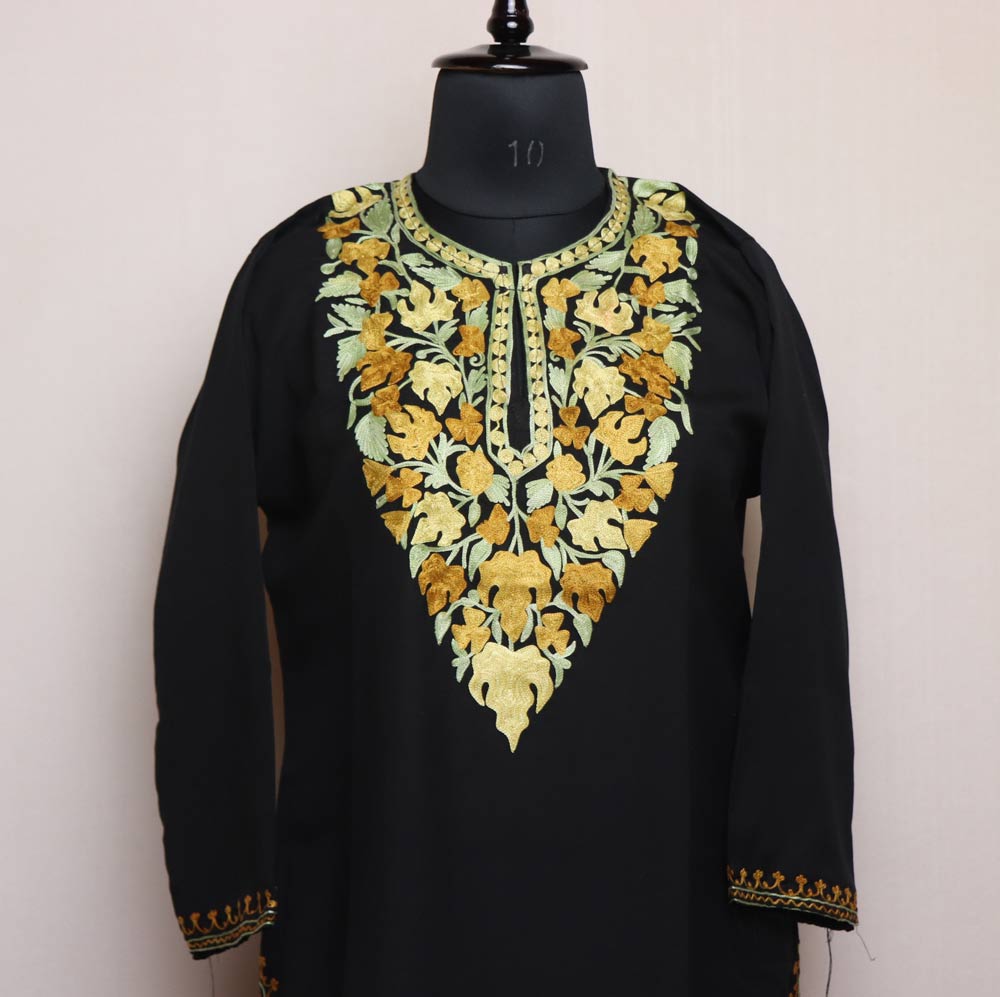
Kashmiri Kurtis are more than just a piece of clothing; they are a representation of centuries-old tradition, artistry, and cultural identity. Originating from the breathtaking valleys of Kashmir, these kurtis showcase intricate craftsmanship and a legacy of fine artistry that continues to mesmerize the world.
Historical Significance
The Kashmiri kurti traces its origins to the royal Mughal era, where Kashmiri artisans mastered the art of embroidery, creating patterns that reflected the natural beauty of the region. Over the centuries, these kurtis became an integral part of Kashmiri attire, evolving in design and functionality while retaining their traditional charm.
Design and Features
The hallmark of a Kashmiri kurti is its intricate embroidery, known as Kashida. This embroidery often depicts motifs inspired by the flora and fauna of Kashmir, such as lotus flowers, chinar leaves, birds, and paisley patterns.
Key elements that define a Kashmiri kurti include:
- Fabrics: Often crafted from luxurious materials like pashmina, wool, silk, or cotton, these fabrics provide comfort and warmth, making the kurtis suitable for diverse climates.
- Embroidery Styles:
- Aari Work: Performed using a specialized needle, creating fine chain stitch patterns.
- Tilla Work: Features metallic thread embroidery, often in gold or silver, adding a regal touch.
- Sozni Embroidery: A delicate needlework that creates detailed and symmetrical designs.
Cultural and Modern Adaptation
Traditionally worn as a part of the everyday attire of Kashmiri women, the kurti has now found its place in global fashion. Designers have adapted the classic kurti, blending traditional embroidery with contemporary cuts and styles. They are paired with leggings, palazzos, or even jeans, catering to modern tastes while preserving their cultural essence.
Global Appeal
Kashmiri kurtis are celebrated for their versatility. From casual wear to elegant formal occasions, they can be styled to suit any setting. Their global appeal lies in their ability to combine luxury with tradition, making them a sought-after garment in both Indian and international markets.
Preservation of the Art
Despite their popularity, the artisans who create these masterpieces face challenges due to mass production and declining demand for hand-crafted items. Efforts are being made to revive this traditional art through government initiatives, NGOs, and designers committed to promoting sustainable fashion.
Conclusion
Kashmiri kurtis are a testament to the artistry and resilience of Kashmir’s rich cultural heritage. Whether adorned with subtle sozni embroidery or the opulent Tilla work, these kurtis continue to embody timeless elegance. As they evolve to meet contemporary fashion trends, Kashmiri kurtis remain a proud emblem of India’s traditional craftsmanship.